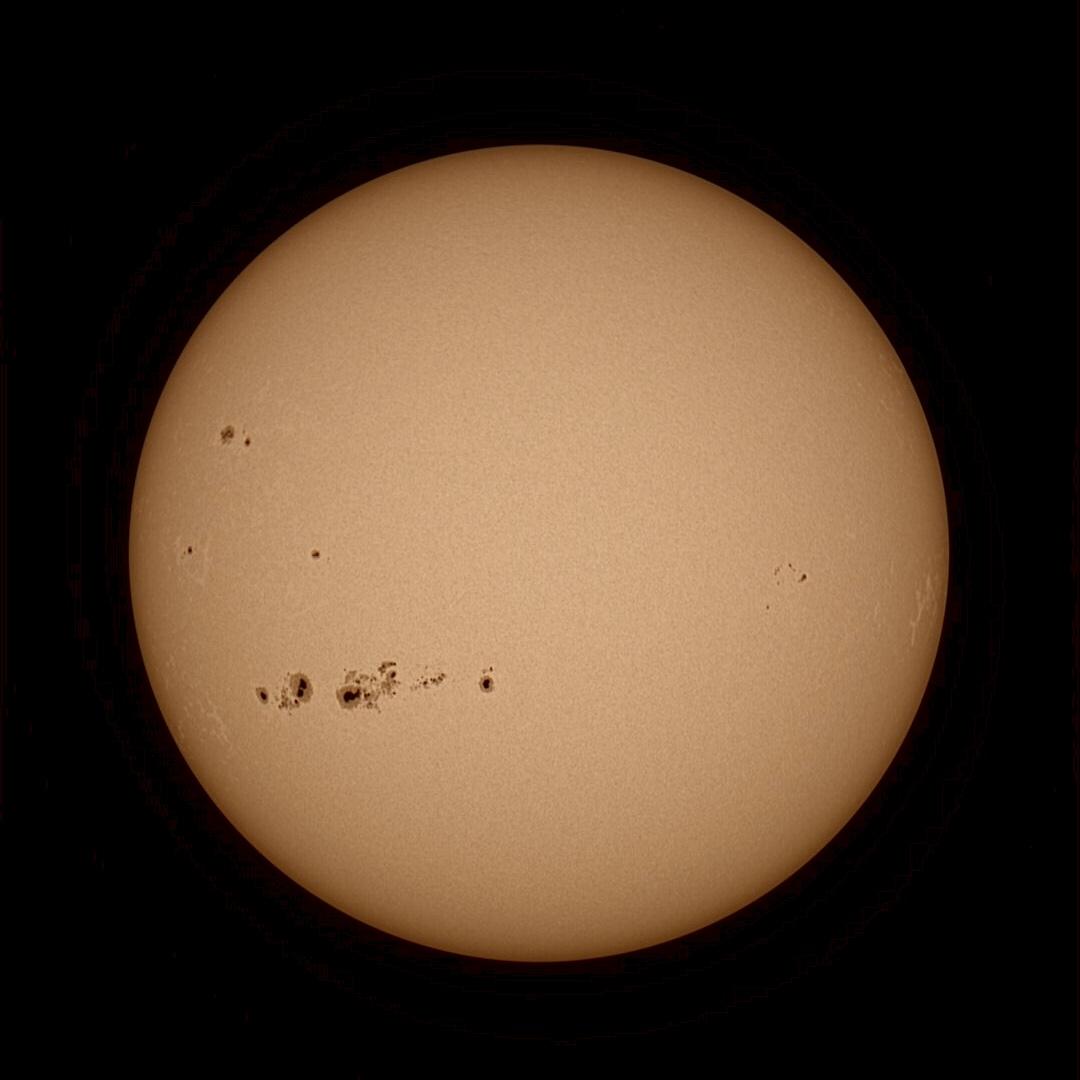The Space Station Crosses a Spotless Sun
Credits: Rainee Colacurcio
#nature #space #astrophotography
The Space Station Crosses a Spotless Sun
Credits: Rainee Colacurcio
#nature #space #astrophotography
In the words of spaceweather.com, this is a sunspot about which "[e]ven Richard Carrington would be impressed."
#astrophotography #sunspot
In the words of spaceweather.com, this is a sunspot about which "[e]ven Richard Carrington would be impressed."
#astrophotography #sunspot
Spectacular #Sunspots visible in this stacked picture of the Sun, taken from North Oxfordshire in the UK today. There are two very (very!) large sunspots visible in the lower third of the disk. Leftmost is 4296 and next to it is 4294. The ‘small one’ to the right is 4298 and that’s about the size of Earth. 4294 and 96 are getting some attention as they are very big and chucking out X flares.
#Astrophotography
Spectacular #Sunspots visible in this stacked picture of the Sun, taken from North Oxfordshire in the UK today. There are two very (very!) large sunspots visible in the lower third of the disk. Leftmost is 4296 and next to it is 4294. The ‘small one’ to the right is 4298 and that’s about the size of Earth. 4294 and 96 are getting some attention as they are very big and chucking out X flares.
#Astrophotography
Tycho's Supernova Remnant in X-ray
Credits: ROSAT, MPE, #NASA
#nature #space #astrophotography
Tycho's Supernova Remnant in X-ray
Credits: ROSAT, MPE, #NASA
#nature #space #astrophotography



